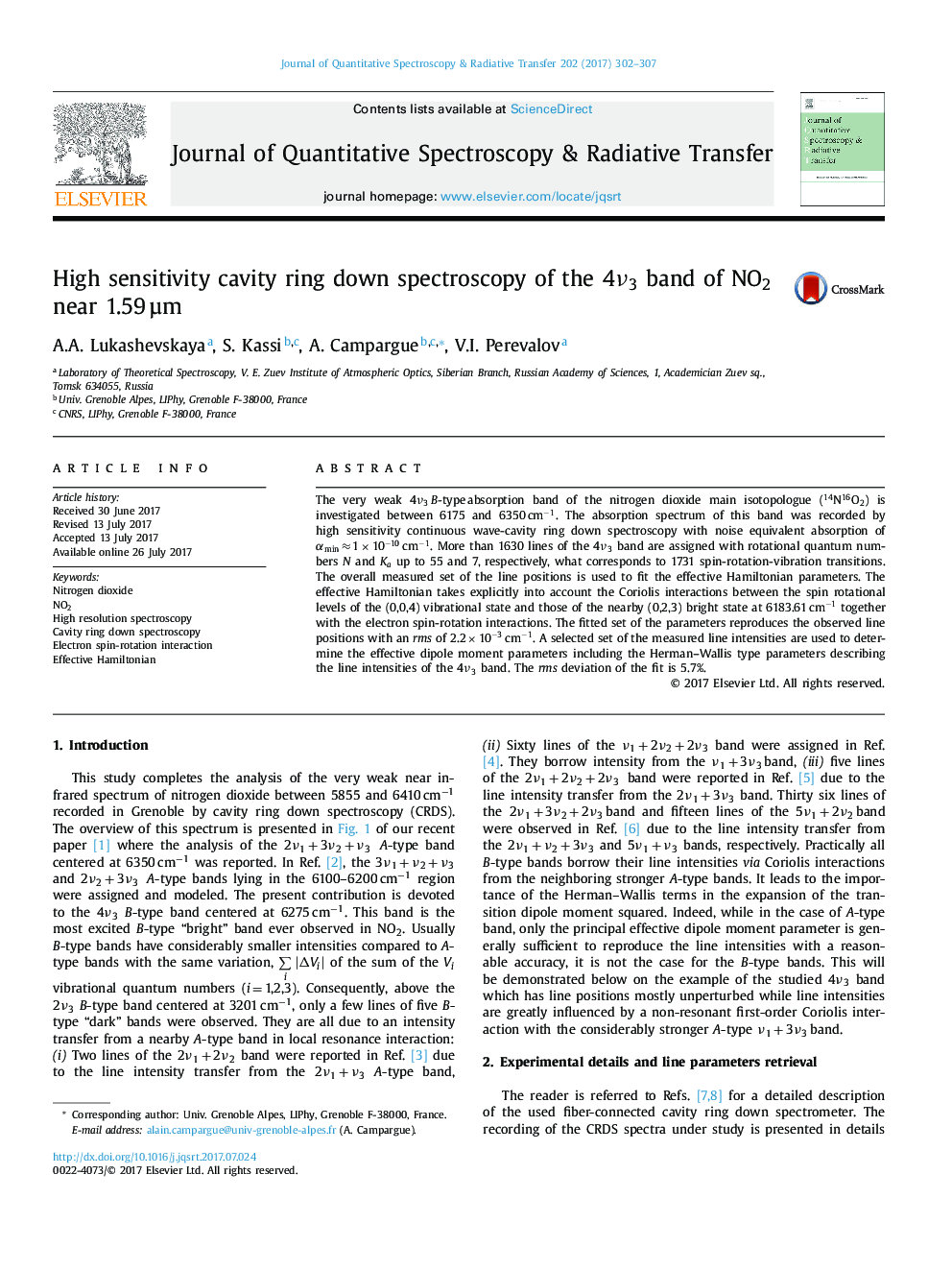| Article ID | Journal | Published Year | Pages | File Type |
|---|---|---|---|---|
| 5426950 | Journal of Quantitative Spectroscopy and Radiative Transfer | 2017 | 6 Pages |
â¢First detection of the 4ν3â¯B-type band of 14N16O2 near 6276â¯cmâ1.â¢1630 lines corresponding to 1731 spin-rotation-vibration transitions are assigned.â¢Line positions are reproduced by an effective Hamiltonian model.â¢The (0, 0, 4) upper level is found mostly unperturbed.â¢Effective dipole moment and Herman-Wallis type parameters are determined.
The very weak 4ν3â¯B-typeabsorption band of the nitrogen dioxide main isotopologue (14N16O2) is investigated between 6175 and 6350â¯cmâ1. The absorption spectrum of this band was recorded by high sensitivity continuous wave-cavity ring down spectroscopy with noise equivalent absorption of αminâ¯ââ¯1âÃâ10â10â¯cmâ1. More than 1630 lines of the 4ν3 band are assigned with rotational quantum numbers N and Ka up to 55 and 7, respectively, what corresponds to 1731 spin-rotation-vibration transitions. The overall measured set of the line positions is used to fit the effective Hamiltonian parameters. The effective Hamiltonian takes explicitly into account the Coriolis interactions between the spin rotational levels of the (0,0,4) vibrational state and those of the nearby (0,2,3) bright state at 6183.61â¯cmâ1 together with the electron spin-rotation interactions. The fitted set of the parameters reproduces the observed line positions with an rms of 2.2âÃâ10â3â¯cmâ1. A selected set of the measured line intensities are used to determine the effective dipole moment parameters including the Herman-Wallis type parameters describing the line intensities of the 4ν3 band. The rms deviation of the fit is 5.7%.
